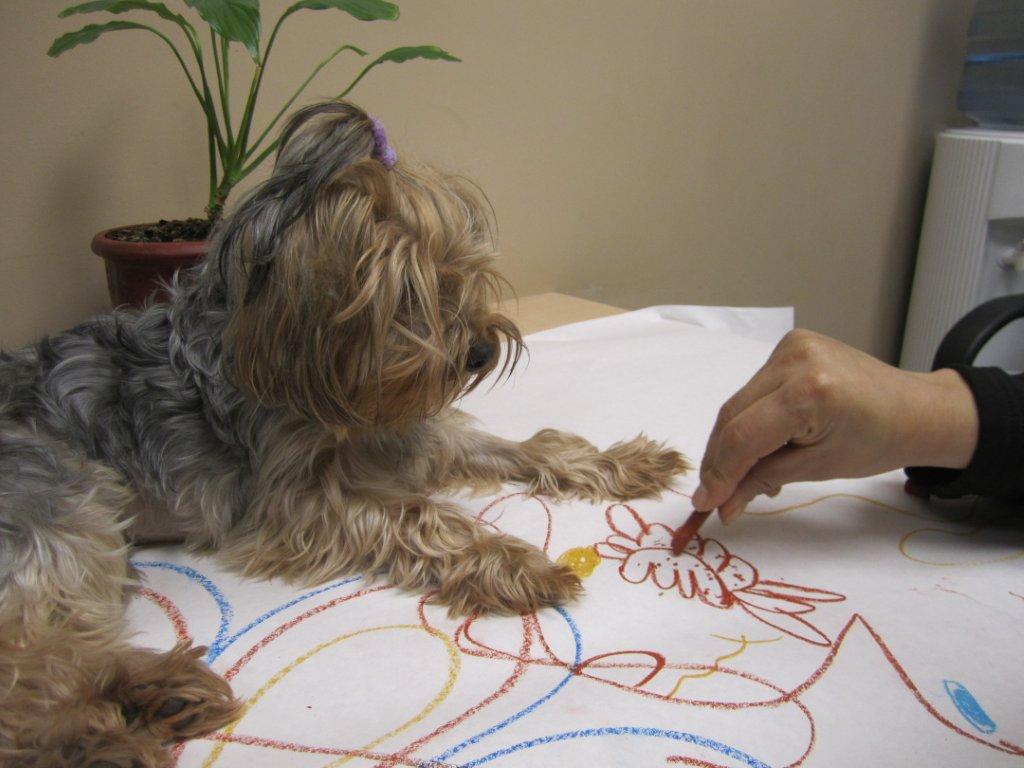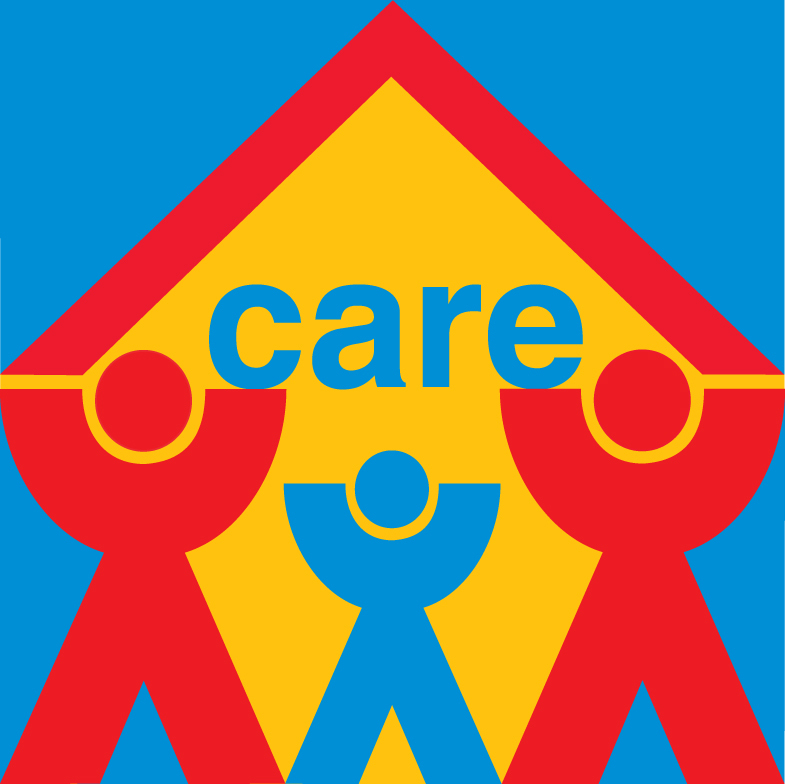Ranch Ehrlo’s clinical team provides a variety of therapeutic services to enhance the social and psychological well-being of our clients.
As part of a three part blog series, guest bloggers will explain the processes and benefits of speech/language pathology, occupational therapy, and animal therapy.
This week, art therapist, animal therapist, and social worker Cyndi Gray discusses what she does to provide therapeutic programming to Ranch Ehrlo Society’s clients.
Animal assisted therapy
My work with animals began in childhood. My grandparents had a farm which was overrun with wild cats and dogs. I tamed the cats and trained many dogs that were unresponsive to other humans. Training our family pets through adolescents and adulthood then followed. When I became a social worker I knew I wanted to have a dog as a co-therapist in my practice however it was not until I moved over to Ranch Ehrlo Society’s Clinical Assessment office that this dream became a reality. Days after I moved over to the assessment office I adopted a Yorkshire Terrier who I named Catie, after a program near and dear to my heart, the Canadian Aids Treatment Information Exchange program. Today, Catie continues to work with me in both my social work and art therapy capacities.
Animal assisted therapy is goal oriented, time sensitive, and treatment focused. The purpose of animal assisted therapy in my practice is to create a comfortable atmosphere for the individual receiving services. There are both advantages and disadvantages to introducing animal assisted therapy to one’s practice. Ethical considerations are paramount. If the resident is fearful or has harmed animals in the past animal assisted therapy may be contraindicated. It is important that both the animal and the person receiving therapy are accepting of the services provided.
A screen is conducted before Catie is introduced into the therapeutic process with residents. Most often residents regularly approach me with a request to meet and work with Catie. She is equally excited to work with the resident but has been trained not to become overly anxious in her interactions. Emotional regulation is a huge component of Catie’s work. Her presence alone calms individuals and helps them to integrate into the treatment process. Many of the treatment goals in animal assisted therapy interventions include emotional regulation, improved sense of self, social communication, problem solving, appropriate and healthy touching and boundary setting. Youth who are adverse to therapy are generally open to meeting with Catie and are eager to engage in a reciprocal, unbiased, and non-judgmental unconditional acceptance of love.
In my four years of working with Catie I have observed her to quell resident’s fears, encourage them to regulate their emotions during times of crisis, build relationships with individuals who would normally be considered treatment resistant, and most commonly help residents to feel emotionally connected. There are a plethora of benefits to using animals in a therapeutic setting some of which include:
- Engaging the resident in treatment while building rapport with the animal and later the therapist.
- Animal therapists offer comfort and support during difficult topics or situations.
- Provides non-judgmental acceptance and attention to the resident.
- Serves as a catalyst to continue participation in therapy in such cases where the resident has an attached bond to the animal.
- Offers a semblance of safety, while normalizing the therapeutic setting.
- Provides opportunities to engage in social communication without rejection. The therapy dog is a positive means to practice newly learned social skills without judgment, and with complete and total forgiveness.
- Improves self-esteem of the resident.
- Petting a dog is soothing and offers a sense of comfort which is extended to healing.
- Teaches the resident inappropriate versus appropriate touching without criticism.
- Improves morale among staff members.
- Therapy dogs offer comfort in which a therapist simply cannot provide.



